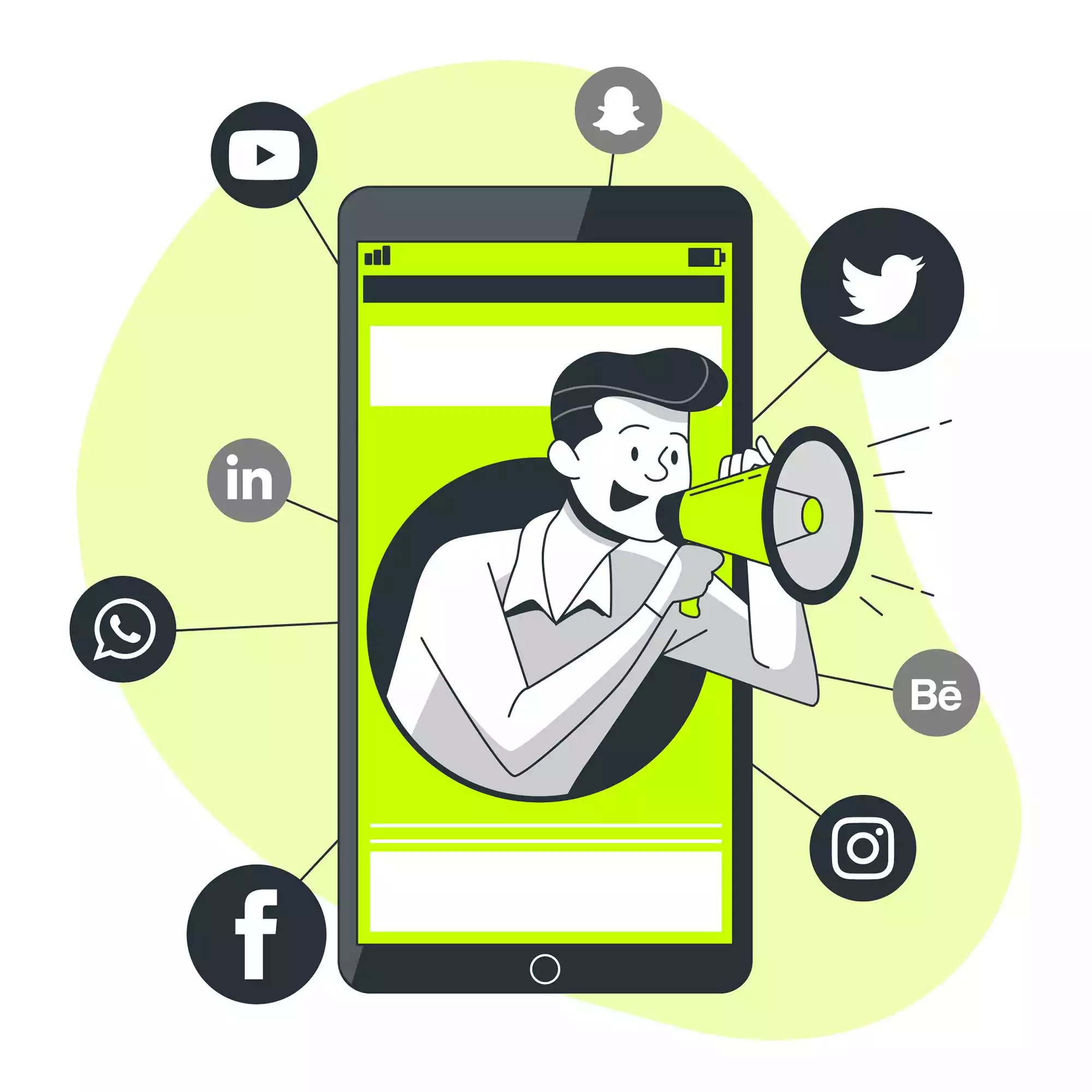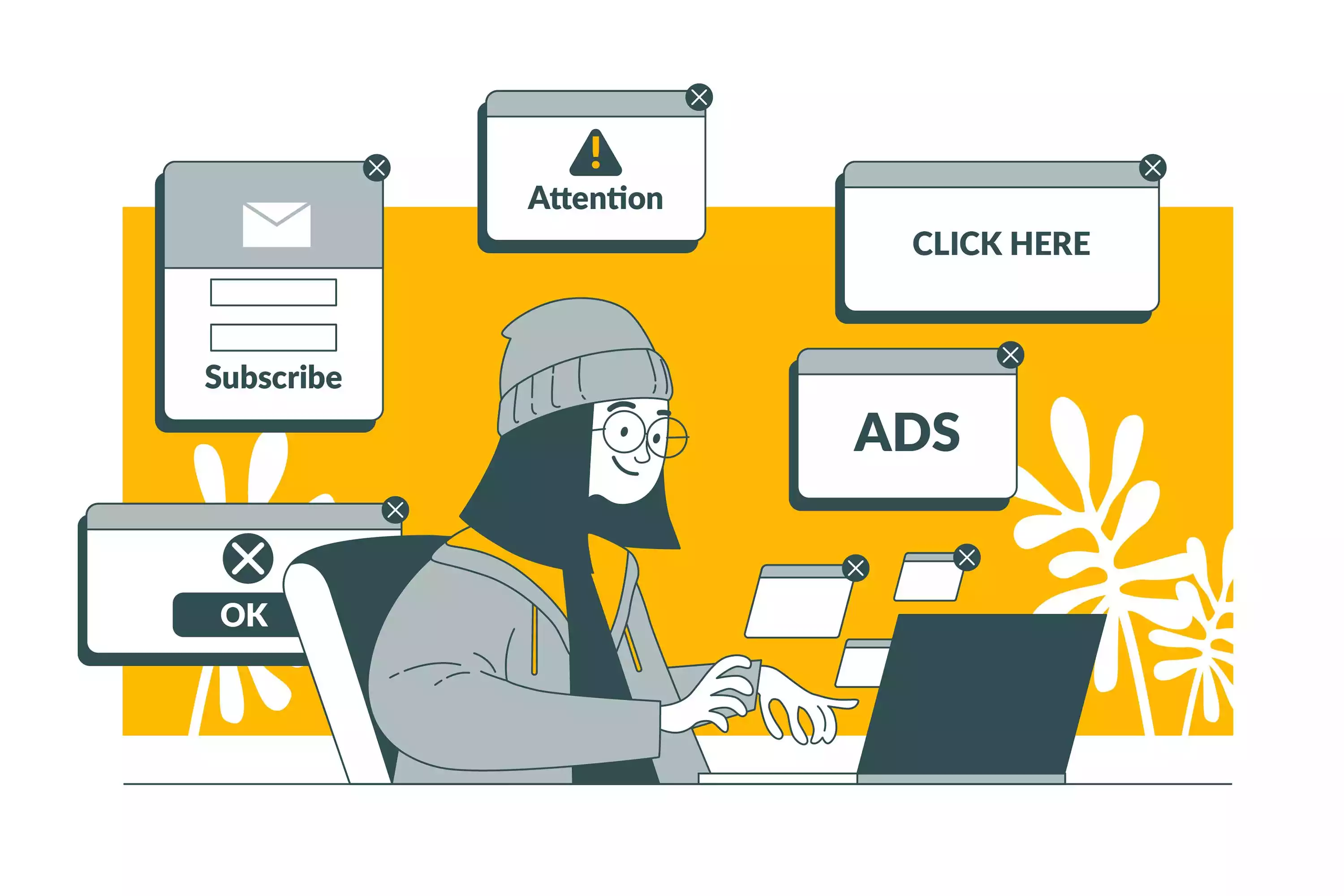Table Of Contents
Understanding Influencer Marketing
Influencer marketing is a strategy where brands collaborate with individuals who have a significant online following to promote products or services. These influencers can sway the opinions of their audience due to their credibility and relationship with followers.
![person-on-social-media.jpg]() How Influencer Marketing Works
How Influencer Marketing Works
- Collaboration Process: Brands identify suitable influencers based on their audience and values. They negotiate terms and set campaign goals.
- Content Creation and Distribution: Influencers create authentic content that showcases the brand’s products or services, distributing it across their platforms to reach their followers.
- Authenticity and Trust: Influencers often foster genuine connections with their audience, making their recommendations more trustworthy than traditional ads.
- Targeted Reach: Brands can reach specific demographics by selecting influencers whose followers align with their target market, enhancing the effectiveness of their campaigns.
Exploring Paid Advertising
Paid advertising involves paying for promotional space to display ads across various platforms, aiming to reach a broader audience and drive traffic or sales. This can include digital channels, print media, and more.
![19197409.jpg]() Types of Paid Advertising
Types of Paid Advertising
- Pay-Per-Click (PPC): Advertisers pay each time a user clicks on their ad, commonly used in search engines like Google.
- Display Ads: Visual advertisements placed on websites, often using banners or videos to capture users' attention.
- Social Media Ads: Paid promotions on platforms like Facebook, Instagram, and Twitter, targeting specific demographics based on user data.
How Paid Advertising Works
- Ad Creation and Targeting: Advertisers create compelling ads tailored to their audience, utilizing targeting options based on demographics, interests, and behaviours to maximize effectiveness.
- Budget and Bidding Strategies: Advertisers set budgets for their campaigns and choose bidding strategies (e.g., cost-per-click or cost-per-impression) to manage how much they are willing to pay for ad placements.
Benefits of Paid Advertising
- Immediate Visibility: Paid ads can generate quick exposure and traffic, allowing brands to reach their audience almost instantly.
- Scalability: Campaigns can be scaled up or down based on performance, enabling flexibility in budget allocation and reach.
- Detailed Analytics and Tracking: Paid advertising platforms provide comprehensive analytics, allowing advertisers to track performance metrics, optimize campaigns, and measure ROI effectively.
Key Differences Between Influencer Marketing and Paid Advertising
The table highlights key differences between influencer marketing and paid advertising, providing an understanding of how each strategy operates and their potential impact on marketing campaigns.
|
Aspect
|
Influencer Marketing
|
Paid Advertising
|
|
Definition
|
A marketing approach that involves endorsements from individuals who possess a social influence in a particular niche.
|
A technique where brands pay for space to promote their product or service on various channels.
|
|
Engagement Type
|
Organic and trust-based, as followers choose to interact with the influencer.
|
Passive; audiences are presented with ads regardless of their choice.
|
|
Reach
|
Targeted reach, as influencers have specific audience demographics.
|
Broad reach can be less targeted but can be scaled quickly.
|
|
Content Creation
|
Involves collaboration with influencers to create content that resonates with their audience.
|
Brands or agencies create content to match the advertising platform's specifications.
|
|
Relationship Building
|
Focuses on long-term relationship building with both influencers and their followers.
|
Typically transactional, focused on immediate results.
|
|
Costs
|
Can vary; sometimes involves a flat fee or incentives based on performance.
|
Costs are based on ad space, duration, and competitive bidding.
|
|
Authenticity
|
High, as content fits into the influencer’s narrative and style, suggesting a genuine endorsement.
|
Lower, as ads are seen as less personal and more directly commercial.
|
|
Control
|
Brands may have less control over the exact messaging as they collaborate with influencers.
|
Brands maintain control over the ad's look, message, and placement.
|
|
Performance Analysis
|
Metrics can include engagement rates, conversion rates, and earned media value.
|
Metrics often revolve around clicks, impressions, and return on ad spend (ROAS).
|
|
Platform Dependence
|
Dependent on social media platforms and influencer's audience presence.
|
Varies across multiple platforms such as search engines, websites, and social media.
|
When to Choose Influencer Marketing?
![3901611.jpg]() Choosing influencer marketing can be highly effective in various scenarios, especially when aiming to build trust, enhance brand identity, and reach specific audience segments more authentically. Let's delve into when to opt for influencer marketing and explore some successful Indian influencer campaigns.
Choosing influencer marketing can be highly effective in various scenarios, especially when aiming to build trust, enhance brand identity, and reach specific audience segments more authentically. Let's delve into when to opt for influencer marketing and explore some successful Indian influencer campaigns.
When to Choose Influencer Marketing
- Building Brand Trust and Authenticity: When your main goal is to build trust in your brand, partnering with influencers can help humanize your products or services. Influencers have already built strong relationships with their followers, who trust their recommendations.
- Launching a New Product: To create buzz around a new product launch, influencers can provide genuine, first-hand testimonials. Their creative content can showcase your product's use and benefits in real-life scenarios, making it more relatable.
- Targeting Niche Markets: If your product or service caters to a specific niche, influencers within that niche can help you reach your target audience directly. Their endorsement can drive interest and sales more effectively than traditional broad-spectrum advertising.
- Content Creation and Diversity: When you want to enrich your content strategy with authentic and diverse content, influencers can bring new perspectives and styles to your brand's online presence, engaging different segments of your audience.
- Boosting Engagement and Reach on Social Media: To amplify your social media presence, influencers can generate engagement and increase your brand's reach through shared posts, stories, and interactive content, drawing attention to your brand.
Examples of Successful Indian Influencer Campaigns
- Mamaearth: The skincare brand collaborated with various beauty influencers on platforms like Instagram and YouTube, effectively using user-generated content to promote their natural products, leading to increased brand visibility and sales.
- Zomato: The food delivery service has partnered with food bloggers and social media influencers to create engaging content, showcasing their services and promotions. This strategy helped them connect with food enthusiasts across India.
- Licious: This online meat and seafood delivery service used influencer marketing by collaborating with chefs and food influencers to create recipe videos and reviews, enhancing their brand awareness and consumer trust.
These successful campaigns highlight how influencer marketing can effectively engage targeted audiences, build trust, and drive brand objectives in the diverse and dynamic Indian market.
Choose Influencers At The Best Price
Ready to unlock the full potential of your brand with the power of influencers? Dive into our world where premium influencer partnerships meet unbeatable value. Don't just chase trends — set them. Click here and uncover the best-priced influencer collaborations today. Transform your marketing game now!
![Collaborate with Influencers.png]()
When to Choose Paid Advertising?
![6076520.jpg]()
Paid advertising can be a powerful tool for businesses looking to achieve specific marketing objectives. Here are some ideal scenarios for opting for paid advertising and examples of successful Indian paid advertising campaigns:
- Quickly Boosting Visibility: Paid advertising is effective when you want to quickly increase the visibility of your product, service, or brand to a broad audience. It's particularly useful for new brands or product launches that need immediate awareness.
- Targeting Specific Audiences: If you have a clear understanding of your target audience, paid ads allow for precise targeting based on demographics, interests, behaviours, and more. This makes your ads more relevant and effective.
- Achieving Timely Results: For campaigns tied to specific events or promotions that are time-sensitive, paid ads can ensure your message is seen by your audience when it's most relevant.
- Measuring and Analysing: The advantage of paid advertising is the ability to track and analyze the performance of your ads in real time. This allows for data-driven decision-making and optimizing campaigns for better ROI.
- Enhancing Organic Efforts: When combined with organic marketing efforts, paid ads can extend the reach of your content, support lead generation, and drive conversions where organic reach may fall short.
Examples of Successful Indian Paid Advertising Campaigns
- Cadbury Celebrations #NotJustACadburyAd: This campaign was revolutionary as it used AI to create personalized advertisements supporting local businesses struggling during the festive season. It showcased not only Cadbury products but also local store names, making the ad highly relatable to viewers across different regions.
- Coca-Cola's 'Share a Coke' Campaign: Coca-Cola's campaign personalized the Coke experience by putting popular names on bottles, incentivizing customers to find their names or that of their friends and family, and sharing the beverage. This campaign was a hit on social media and was supported by paid ads that reached a vast audience.
Combine Strategies for Maximum Impact
Combining different marketing strategies, such as influencer marketing and paid advertising, can lead to a more comprehensive approach that leverages the strengths of both methods to achieve maximum impact. Here are the benefits of this hybrid approach and tips for integrating these strategies effectively:
- Broader Reach: While influencers can provide access to a loyal and niche audience, paid advertising can extend that reach to broader or more targeted demographics.
- Enhanced Credibility: Influencer endorsements can add credibility and a sense of trust to your brand, which can be amplified with paid advertising to ensure the message reaches more potential customers.
- Diversified Content: Influencers typically create authentic content that resonates with their followers. When combined with the varied formats of paid ads, this leads to a rich tapestry of content that appeals to different segments of your market.
- Data-Driven Insights: Paid advertising offers robust analytics that can inform the effectiveness of influencer partnerships, allowing for better measurement and optimization of marketing campaigns.
- Consistent Messaging across Platforms: Using both strategies ensures consistent brand messaging across different platforms, reinforcing brand identity and values.
- Leveraged Influencer Reach: Partnering with influencers in paid campaigns can leverage their reach and authority, making your paid ads more impactful.
7 Tips for Integrating Influencer Marketing and Paid Advertising
- Align Brand and Influencer Values: Choose influencers whose values align with your brand to ensure that the messaging is cohesive and trusted by both the influencer’s audience and your target market.
- Utilize Influencer Content in Paid Ads: Amplify the content created by influencers by using it in your paid advertising efforts. This can increase the content’s exposure and lend authenticity to the ads.
- Engage Influencers in Retargeting Campaigns: Use retargeting paid ads to re-engage users who interact with influencer content. This creates multiple touchpoints with potential customers.
- Coordinated Campaign Launches: Launch influencer content and paid ads simultaneously to create a buzz. This integrated approach can lead to higher engagement as audiences encounter the campaign across multiple touchpoints.
- Optimize Budget Allocation: Analyze which influencer partnerships and ad formats are performing best and reallocate budgets accordingly to maximize ROI.
- Cross-Promote Across Platforms: Have influencers promote across various platforms where you also run paid ads, such as combining YouTube, Instagram, and Facebook campaigns for a cohesive multi-platform push.
- Track Performance and Adjust: Use the analytics from your paid ads to track the performance of your influencer-partnered campaigns. Adjust strategies in real time based on this data to improve the campaign's effectiveness.
![birthday occasion]() Birthday Gifts
Birthday Gifts
![anniversary occasion]() Anniversary Gifts
Anniversary Gifts
![women]() Women
Women
![men]() Men
Men
![Couples]() Couples
Couples
![Couples]() Wedding Gifts
Wedding Gifts

 Birthday Gifts
Birthday Gifts
 Women
Women
 Men
Men
 Anniversary Gifts
Anniversary Gifts
 Wedding Gifts
Wedding Gifts
 How Influencer Marketing Works
How Influencer Marketing Works Types of Paid Advertising
Types of Paid Advertising Choosing influencer marketing can be highly effective in various scenarios, especially when aiming to build trust, enhance brand identity, and reach specific audience segments more authentically. Let's delve into when to opt for influencer marketing and explore some successful Indian influencer campaigns.
Choosing influencer marketing can be highly effective in various scenarios, especially when aiming to build trust, enhance brand identity, and reach specific audience segments more authentically. Let's delve into when to opt for influencer marketing and explore some successful Indian influencer campaigns.

 We now support international payments
We now support international payments
